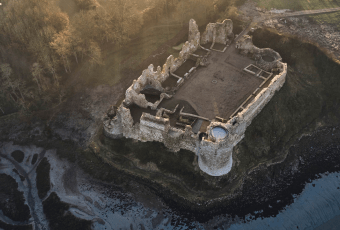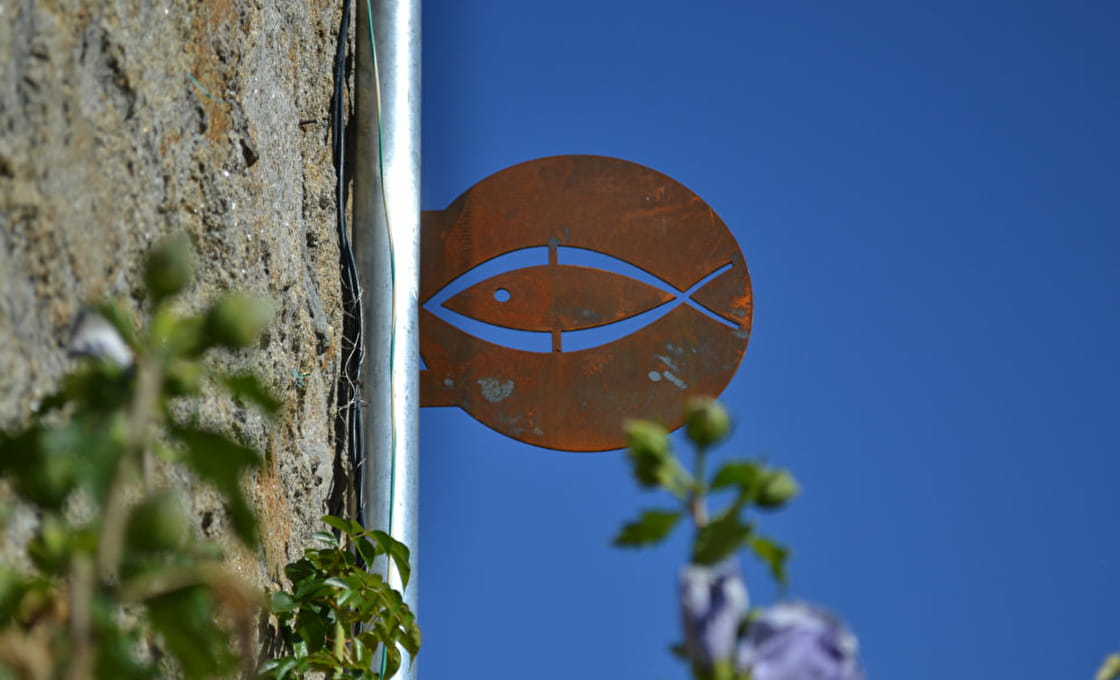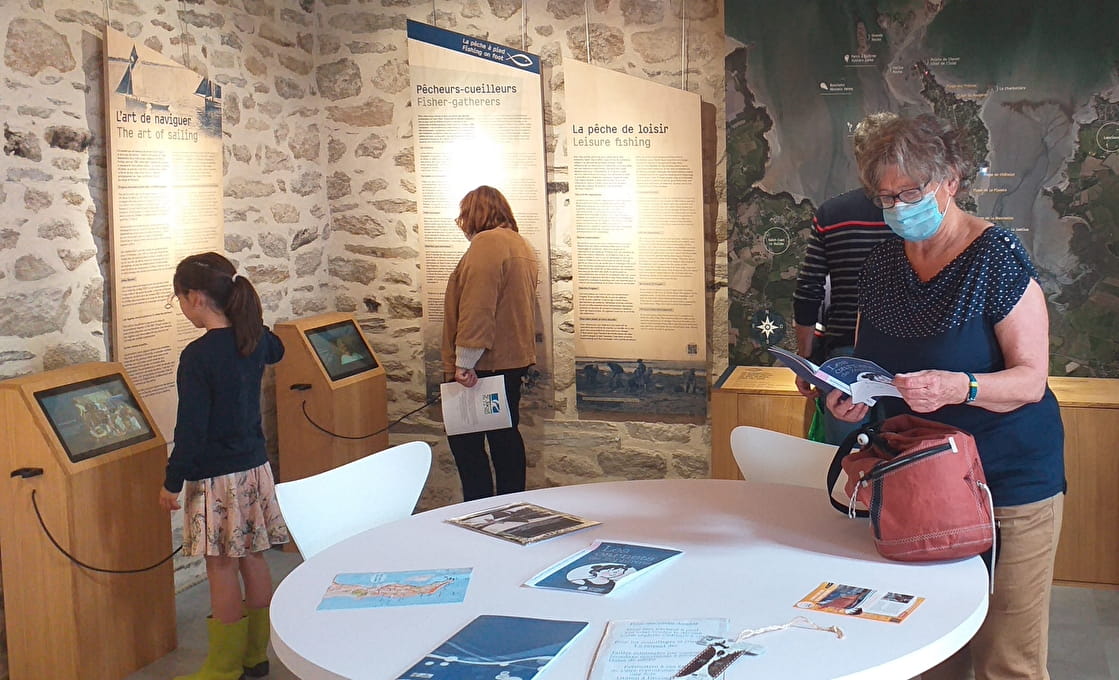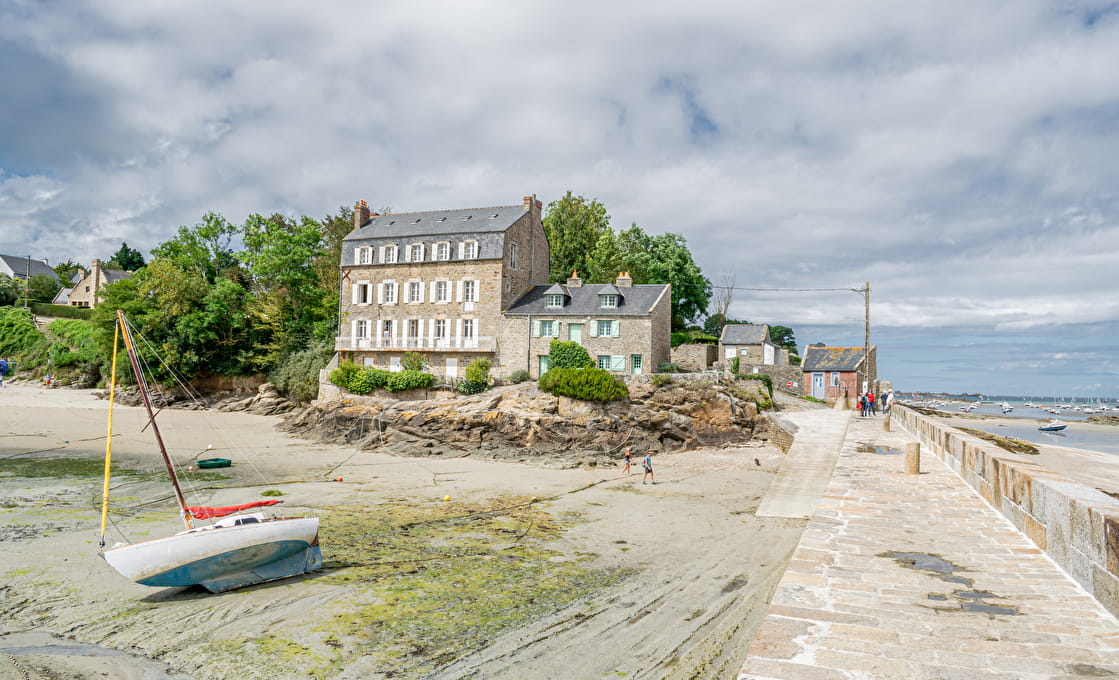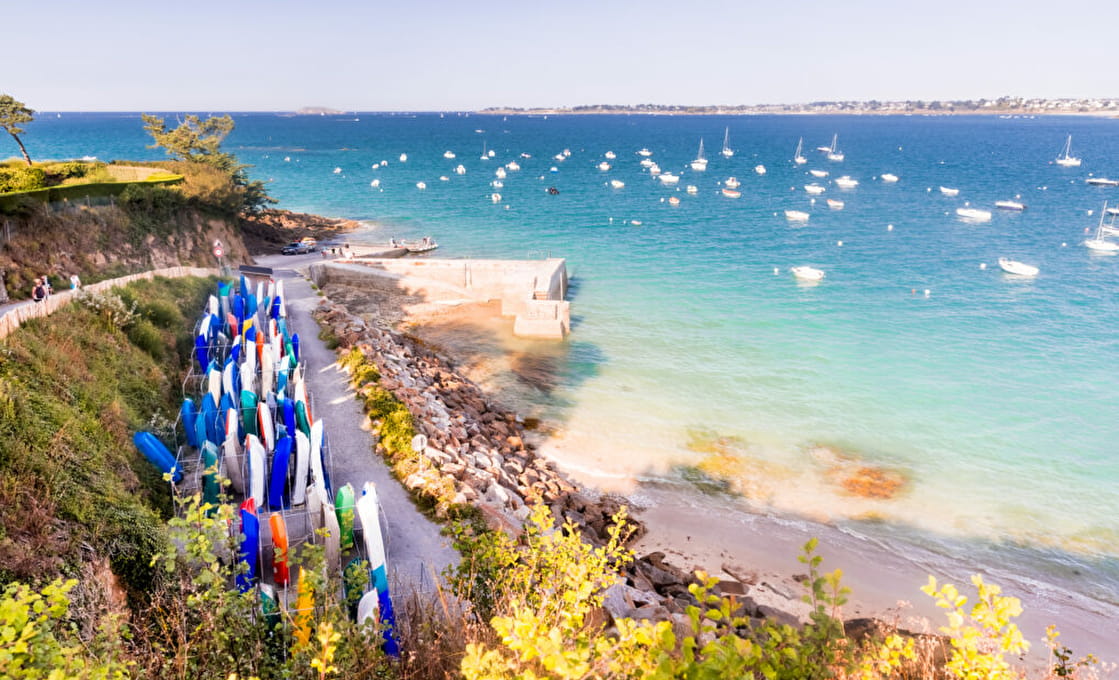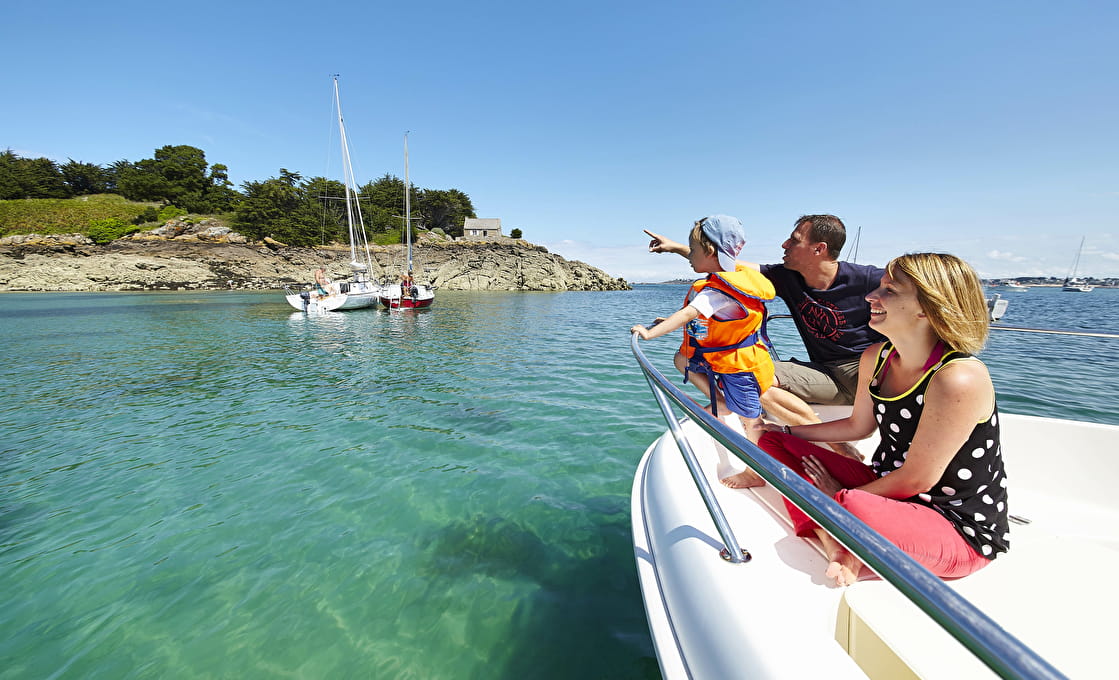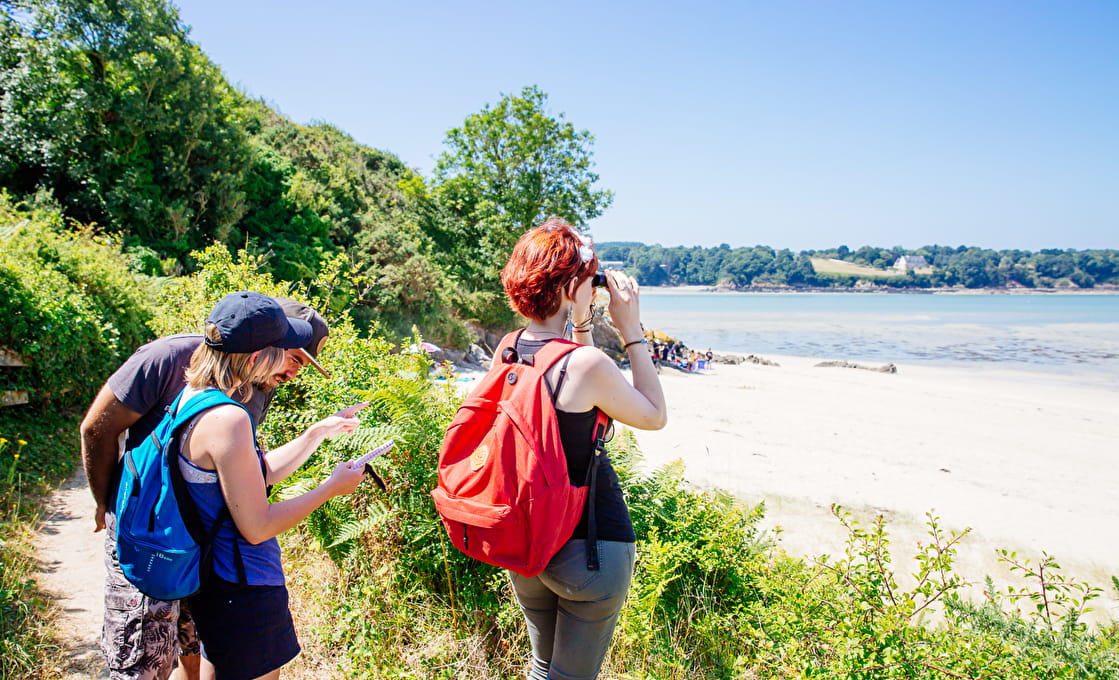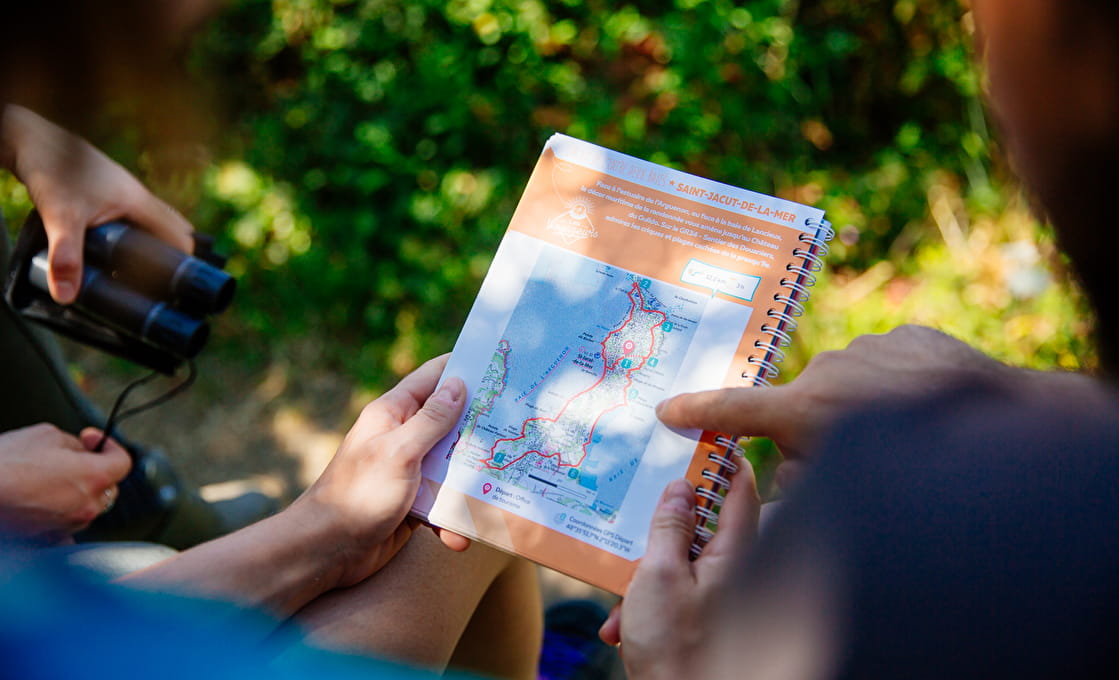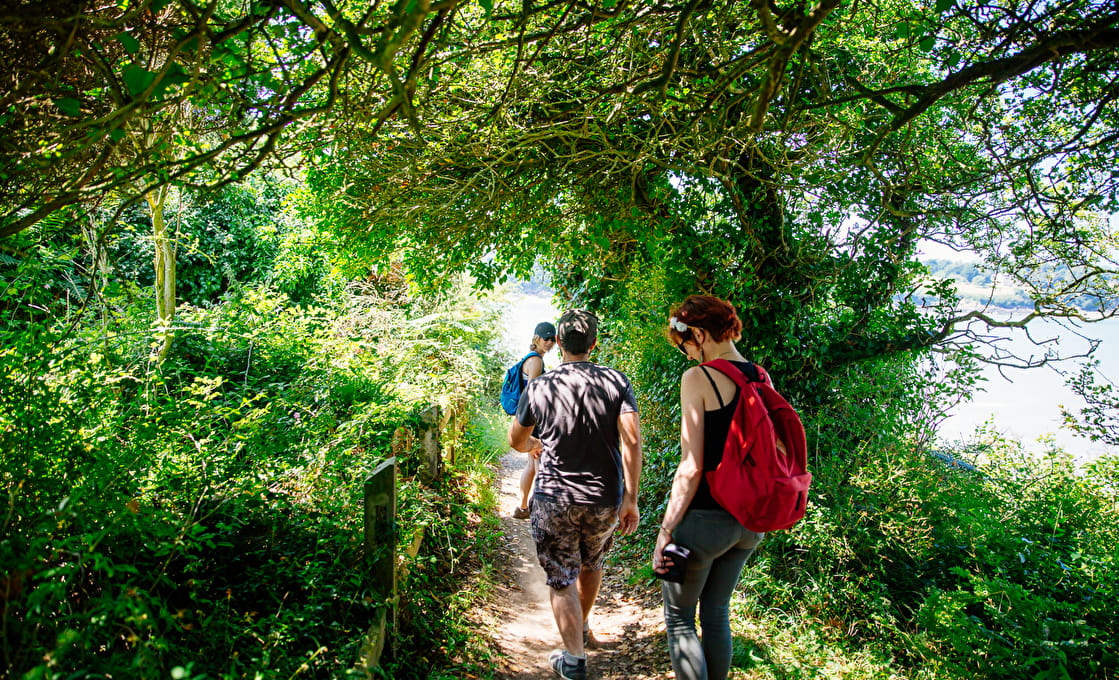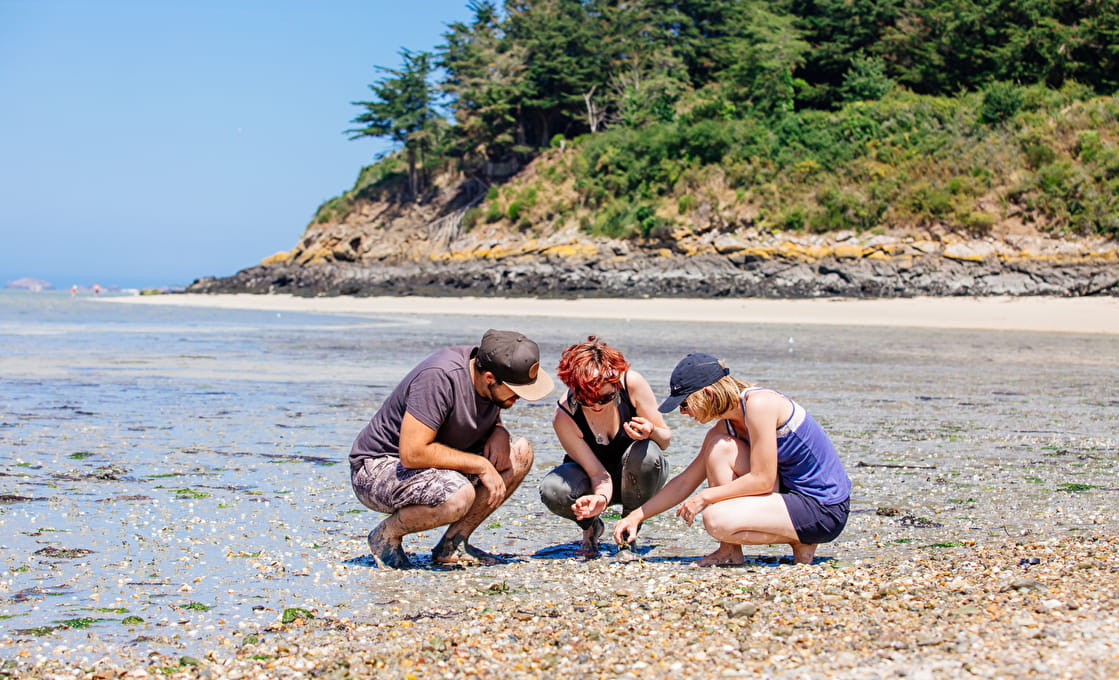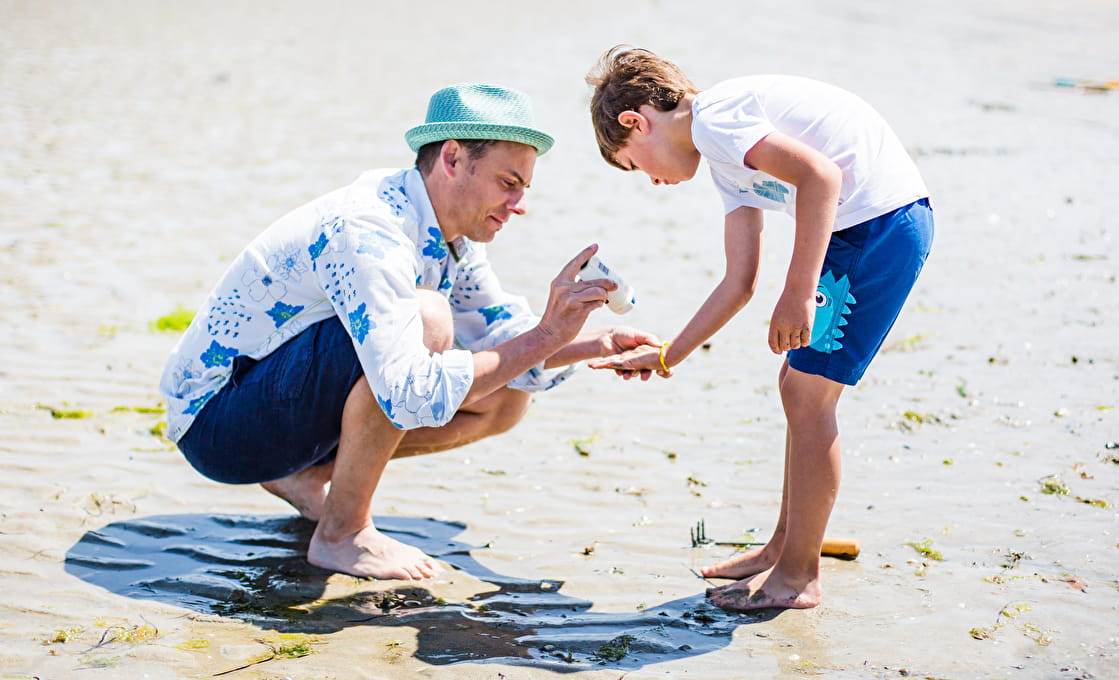
Saint-Jacut-de-la-Mer
Saint-Jacut-de-la-Mer combines the charm of a fishing village with the relaxation of a seaside resort.
Saint-Jacut-de-la-Mer, a charming village
Formerly an island, the peninsula of Saint-Jacut-de-la-Mer has long lived from fishing.
Today it is a charming village, out of time, where one takes pleasure in strolling in the flowery alleys. Here, the houses, aligned in rows, are built lengthwise. A tactic to protect yourself from the wind.
Do not miss !
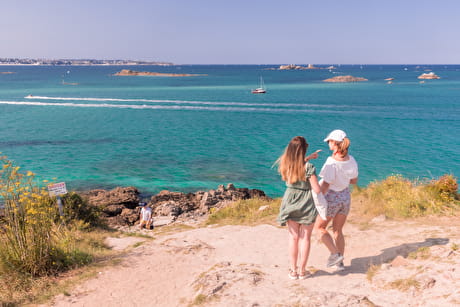
The Pointe du Chevet
La Pointe du Chevet is a classified site Natura 2000 zone, which reveals an exceptional panorama over the bay of Arguenon, the island of Ebihens as well as the island of Colombière, a nature reserve for roseate terns.



The Benedictine Abbey
A Benedictine monastery founded by Saint-Jacut in the 3th century, the Abbey was, for Brittany and for centuries, a high political and spiritual place. The Abbey buildings are located in the heart of a vast XNUMXha landscaped garden, by the sea.
Today it can no longer be visited (it is a reception house), but do not hesitate to stroll in its gardens.

Les Ebihens
This jewel of the Emerald Coast which extends the Saint-Jacut-de-la-Mer peninsula to the main rock of 20 hectares, is one of the few private islands in Brittany. In addition to its beautiful beach in the north which sometimes takes on tropical colors, the island is topped with a fortified tower, built by Vauban at the end of the XNUMXth century. A very beautiful little hamlet of old houses adjoins the tower, the crossing on foot starting from Pointe du Chevet attracts many walkers, who go to the island for a picnic before the water rises. .
Please note: find out about the tide times before making the crossing.

The sea as a playground!
The Saint-Jacut peninsula is a real playground for lovers of nature and the great outdoors.
- Take a tour of the beaches : There are no less than 11 fine sandy beaches along the coast of the peninsula: laze around, have fun, fish on foot... the choice is yours!
- Want water activities? you are spoiled for choice: windsurfing, catamaran, kayak, paddle, sand yachting... Saint-Jacut-de-la-Mer is a kite-surfing spot all year round that will satisfy your desire for sensations ! Discover the nautical club
- The peninsula can also be explored on foot or by bike, and the advantage is that you will always find a stretch of beach for a little dip!
- Without forgetting shore fishing : around the peninsula, you can go fishing on foot: cockles, clams, razor clams, crabs, oysters, etc. Follow our advice for a shore fishing trip
To better enjoy
A heritage trail to follow
Two routes, punctuated with totems, allow you to explore the peninsula to discover the maritime cultural heritage!
By following one, you will find the soul of the fishing village that Saint-Jacut was until the middle of the 20th century. You will be guided from the tourist office, via the main street, the Fisherman's House, the port of Châtelet, then that of Houle Causseul. Follow the other, it will take you in the footsteps of the first inhabitants of the beaches... Departing from the tourist office, you will stop near the Abbey, then at the Chef de l'Isle, and finally, at the Bank.
To accompany your exploration... A booklet, and the history of the places told by two Jaguen children born in the 20s (on sale in various points of sale in the town, and at the tourist office)
To follow the course· The Notebooks of Zéphirine are designed to accompany the visit (Illustrated booklet, available in several points of sale in the town, including the tourist office)
By following one, you will find the soul of the fishing village that was Saint-Jacut until the middle of the 20th century. You will be guided from the tourist office, passing by the main street, the Fisherman's House, the port of Châtelet, then that of Houle Causseul. Follow the other, it will take you in the footsteps of the first inhabitants of the strikes... Departing from the tourist office, you will stop near the Abbey, then at the Chef de l'Isle, and finally, at the Bank.
To accompany your exploration... A booklet, and the history of the places told by two Jaguen children born in the 20s (on sale in various points of sale in the town, and at the tourist office)
To follow the course: Download the application
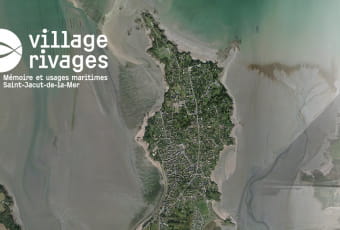
Don't leave Saint-Jacut-de-la-Mer without...
have pushed to the ruins of the castle of Guildo
Castle motte, fortified castle, princely residence…. The Château du Guildo has many facets and a long and often eventful history. The fortified castle sits in lush greenery, on a rocky outcrop facing the sea. The ruins of the castle were acquired by the Côtes d'Armor department in 1981. In the absence of historical sources, the origins of the castle are still poorly understood.

